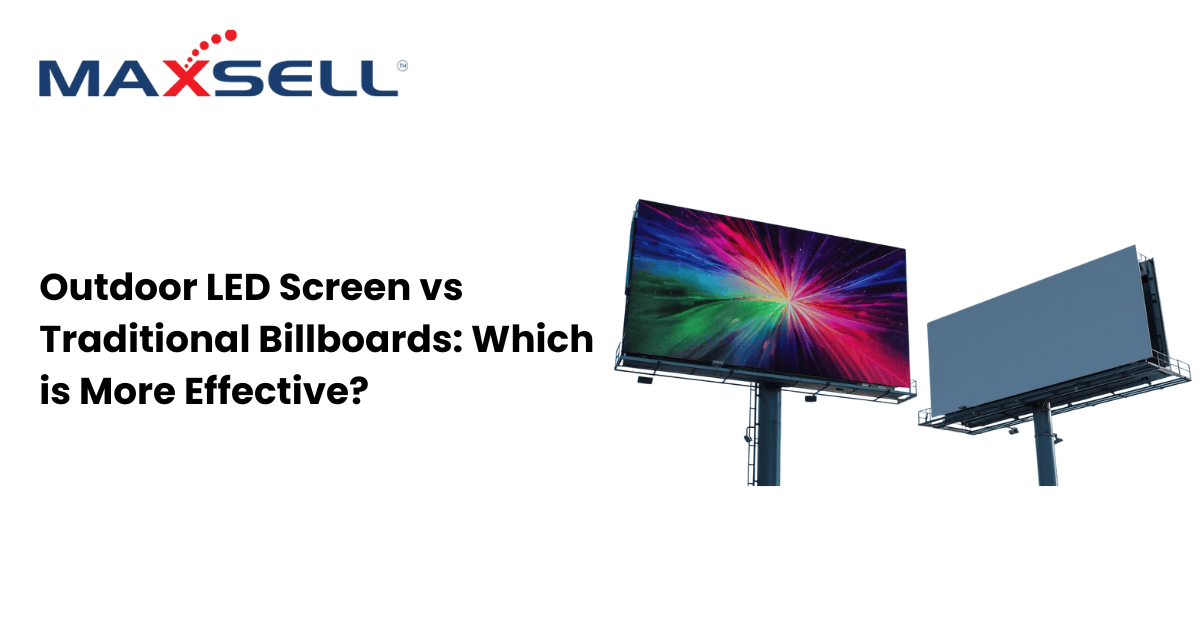Traditional outdoor advertising remains a very effective method to reach mobile populations. From the high road to the bustle of city centres, the war over eyes continues between two giants: the Outdoor LED Screen and the classic static billboard. They both share the same mission.
They want to grab attention and execute communication successfully. However, as the world becomes more technological and audience behaviours change, the argument over the medium that produces superior outcomes becomes more pertinent than ever.
Traditional Billboards still carry sentimental value, but digital LED screens are redefining outdoor exposure with dynamism, brightness, and interaction.
Visual Splendour Embodies Adaptability
The Outdoor LED Screen is distinctive with the feature of playing bright images, animations, and live feeds. The screens consist of light-emitting diodes that maintain brightness regardless of the sun’s exposure during the day or darkness at night. They can adjust brightness levels with the environment so that each advertisement appears clear and prominent.
The Traditional Billboards use stationary printed vinyl or painted boards that aren’t changed until they are physically changed. They are non-digitally flexible, so brands can use only one unchanging design throughout the duration of the campaign.
With an LED display, though, numerous creatives or time slots can be played back automatically. The brand can display different materials during the day as opposed to the evening, for example, without extra expenses or human intervention.
Also Check: LED Video Walls vs. Other Display Solutions
Around the Clock Attention Attractor
Latest research reveals that dynamic billboards hold the view of still boards by as much as 40%. This is because dynamic images and flashing lights capture the human eye quickly than flat images. The screens are still clear and captivating in the rain or during the night.
Conventional billboard displays, nonetheless, still hold ground in sparsely populated regions or rural locations where power connectivity is minimal. They are easy to use, long-lasting, and easy to maintain. They give long-term brand communication or awareness campaigns dependability at a lower operating cost.
Cost, Maintenance, and Efficiency
Installing an Outdoor LED Screen requires a higher upfront cost in equipment, wires, and upkeep. However, it makes up for long-term susceptibility to change and lower costs in printing. Brands can execute varied campaigns centrally, schedule updates, as well as check performance easily.
However, static boards are affordable to make as well as maintain. After installation, they can be retained on the ground for months with minimal maintenance. They are still a cost-effective option for businesses that require uninterrupted exposure but do not require incessant revision.
Rules, Weather, and Real-Life Issues
Outdoor digital screens in India are subject to tighter municipal controls, with special permits and approval of the contents. Extreme heat, heavy rain, or power variations can also impact LEDs. Static boards, as they are weatherproof, tend to be more long-lasting in such environments.
Conclusion
Both channels have their advantages. An Outdoor LED Screen offers uncompromising dynamism, real-time updates, and enhanced audience interaction. Perfect for companies aiming to stay prominent day in, day out. Traditional Billboards still are reliable for static, long-term branding within non-digital areas.
To produce high-impact LED advertising campaigns that reach people emotionally, reach out to Maxsell.


